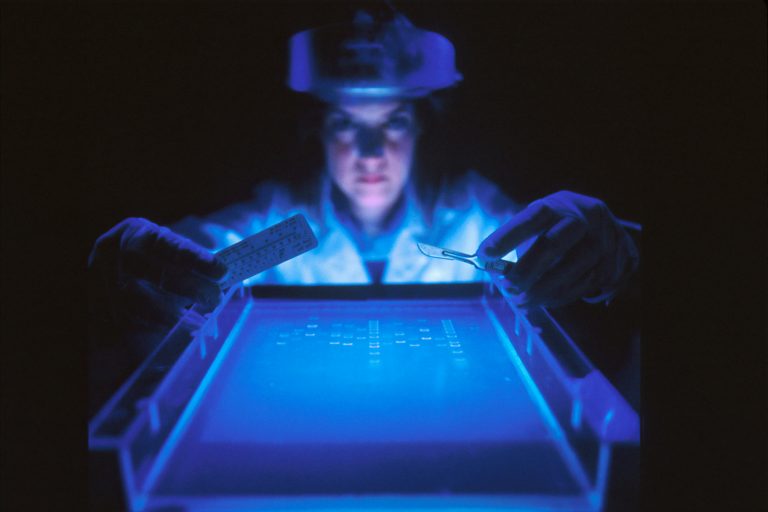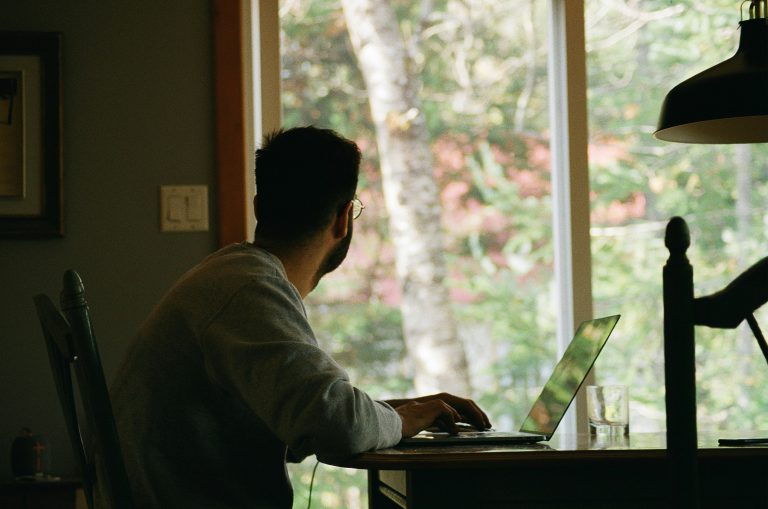“Disrupt yourself or be disrupted”, is a growing cliché. But I’d encourage HR to park their desire for adopting disruptive behaviour for a moment and think of organisational performance in a more holistic and connected sense. The employee or consumer experience is not going to change just because HR want to be disruptive. Contributor Chris Furnell – Lead L&D Partner
Instead I encourage you to use your energy to think about how to assist the organisation to design for adaptability and innovation. I suggest a focus on:
- Design thinking as a critical skill for HR; Embrace life beyond functional specialisms
- And Steward the organisation to a true state of responsiveness
Design thinking.
You’re implementing a new HRIS and are stood in front of a glass room, it’s divided by a partition. In one section, four people from your HR team. In the other, four employees from across the organisation.
In the first room, a debate concludes with three key project considerations: smooth migration from existing to new, strong governance with key stakeholders, an alphabetical catalogue to aid navigation. In the second room a flipchart also lists three things: ensure I get paid on time, easy to book my holidays, easy password reset option.
In short, HR need to develop critical skills in design thinking, where product development lifecycles are used as frequently as employee lifecycles. We’d do well to better balance the focus of conversation at the canteen table, versus exec table. Be at one with the user experience and build things from your user backwards.
In the product development world, perfection doesn’t fall from a tree. Silver bullets don’t exist. Design thinking requires humility, creativity, critical thinking and a great set of questions. It requires a refocus for HR to first empathise with the user experience, chunk a detailed task list into sprints, all before discussing who has the energy and skillset to do it. It requires a constant state of adaptability and iteration; strong analytical skills mashed with a good portion of intuition.
There are many examples like the HRIS glass room scenario. And it’s not unique to HR. With a function that’s responsible for personal details, paying people and deeply sensitive matters, the pressure to ‘get it right first time’ can lead to silos; both in physical terms but also in disconnected thinking.
Yes, the HRIS needs to be right, but let’s challenge what’s meant by first time. Take the true lessons from product development and Agile. It’s easier than you think, but the first thing is to cease your search for a silver bullet. There’s never been a more important time to start your experiment: what if you integrated the product development lifecycle with your focus on employee lifecycle?
Life beyond the functional specialist.
And now to shift from you, to others within the organisation.
I’m sure your smart phone is close, punch into Google ‘my job is’. It’s perhaps the fastest employee survey you could do. An algorithm that highlights the way work is currently designed ruins relationships and life. A tired model where we recruit for suitability to role, issue a job description and fit people into a box. We welcome people returning from maternity leave by ticking the boxes on a return to work form, failing to acknowledge or utilise the new skills they have honed during the past year. The algorithm is enhanced as the employee approaches the end of year; awaiting a conversation which looks back and classifies the good, bad and ugly, often taken by surprise with feedback on ‘opportunities’ to develop.
There is life beyond the functional specialist, where people choose to do their own thing, their own way. In this life, it’s human centred. An individual owns the design of their own work. In a world powered by AI, they bid for what they want to work on, and come together to work in diverse project teams. Up pops a hand as someone has the energy to lead this piece of work, no bosses in sight. A backlog is created, and people get to work on stuff that brings them alive and utilises all their skills, not limited to a job description. When the team disbands, a period of reflection ensues; lessons from mistakes, including new skills and experiences, are carried forward. This is a place where people are always evolving, always learning and it happens with variety and collaboration in abundant supply and demand. It’s perfectly scalable for front line operational and specialist support work.
It’s a shift from variety by chance, to variety by design. You already have a limitless supply of hidden talent, but existing demand is in the form of a boxed job, rather than fluid, energising work. In its current design, work is often shallow, repetitive and unstimulating. The test? Ask a colleague: when was the last time you truly lost yourself in an aspect of work? The pause for them to have to think of an occasion speaks volumes.
Empathise with one of your colleagues for a moment: under what circumstances do you commit so seriously that it pushes your mental energy? The emotional commitment that flows from someone saying hey, you’re the right person for this, I trust you. Or taking a personal risk, because your intuition drives you with enough self-belief to say, I’ll do it, I’ve got an idea.
Variety by design is a place that requires you to cultivate communities of practice; vast networks of knowledge, expertise and energy. This is the only type of structure that innovation requires.
So, how do you let go, and stop defining people’s capabilities by job descriptions? How do you create a fire of innovation and imagination, where variety and collaboration is the fuel? How do you embrace life beyond the functional specialist?
Stewarding a responsive organisation.
And finally, the organisation as a whole system. Frederic Laloux has shown us that adaptability and innovation requires the organisation to shift from predict-and-control to sense-and-respond. When we try to predict the future, we stop listening to reality, he describes.
Here’s the difficult part: drop the rigid planning. We spread resource over time to support the delivery of a three or five year plan. Little room is left for true innovation, although people are encouraged to think differently, but the destination, timeline, method and resources are all set out.
I’m not denying the fundamental need for a sense of purpose or direction of travel. Brian Robertson’s analogy is a good one, but in my own words: if I jumped on my bicycle, I am consciously in tune with everything, sensing and responding to obstacles. I know where I’m heading, but who knows what lay on the path ahead.
I’d guess every reader of this can see 12 months ahead at best, anything beyond this becomes guess work or ego-driven planning, riddled with assumptions. The intensity and pace that start-ups can scale up in this age is exhilarating. Think of a selection of companies that have truly disrupted industries in recent years. They didn’t set out a five-year plan and stick to rigid ways. Salim Ismail gives a fascinating account in his book ‘Exponential Organisations’.
Ismail writes: the only solution is to establish a massive transformative purpose (MTP), set a fluid structure, implement a one-year plan (at most) and watch it all scale while course-correcting in real time.
Perry Timms encourages HR professionals to strengthen their contextual intelligence and external vigilance. In his book ‘Transformational HR’, he states the need to free ourselves from existing limitations of focusing on the people stuff; go high and wide and think more holistically.
If HR are to assist in this stewardship, it must adopt a different mindset. The role needs to evolve beyond process implementation or law-guiding advice. There are examples of processes that were written years ago, yet the organisation has evolved and outgrown them. How are you sustaining pace, relevance and credibility?
Beyond process, we need to help people to strengthen critical thinking, creativity, confidence and courage. We need to create a space where someone can experiment with an alternative bicycle or even specific part. What’s preventing people from doing this now? With the focus on rigid planning, how does bureaucracy manifest itself and cause you self-sabotage? Where is this preventing innovation and adaptability?
Innovation is a lonely place, you’re always looking around wondering why more people aren’t there. In an uncertain world, we spend hours wondering what others are doing, fearful of being the first. In the absence of design thinking skills, many lack confidence to experiment; not just with thinking, but testing something completely new, iterating and continually developing. When we think transformation, we think big, forgetting that small test and learn concepts enable greater scalability.
When under pressure, we rely on what got us here, although deep down beyond bias, know it won’t always get us to where we need to be. It’s time to redesign your system beyond the functional specialist; a people-infrastructure built on variety and collaboration. It’s time to look inward on the mindset and skillset required to steward the organisation to true responsiveness, without the reliance on a rigid plan. Designing for adaptability and innovation is no longer optional. How will you change the Google algorithm?









